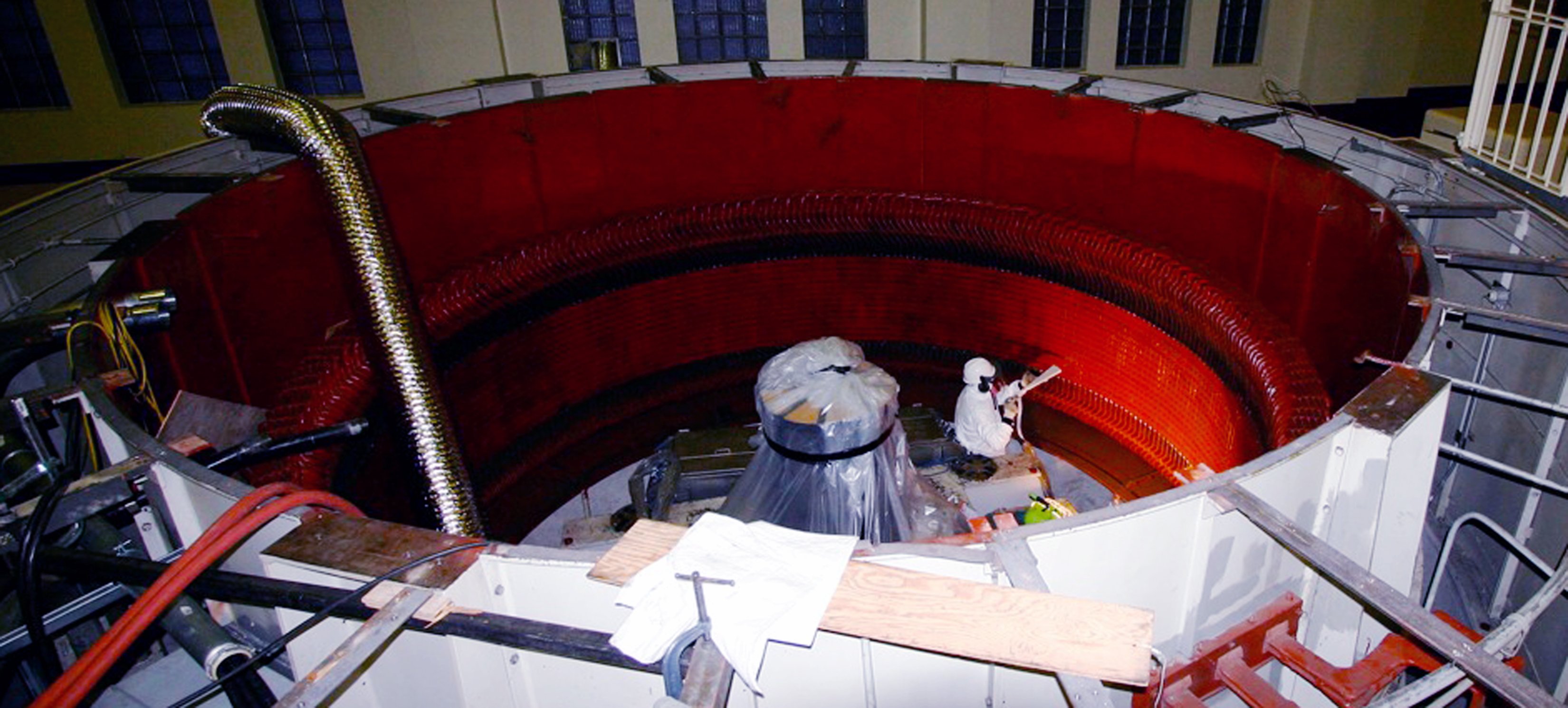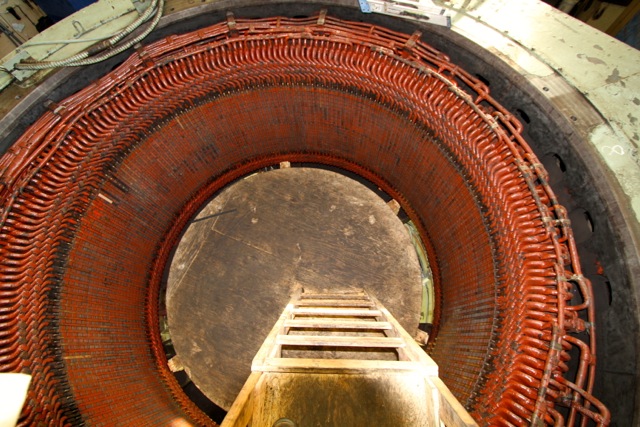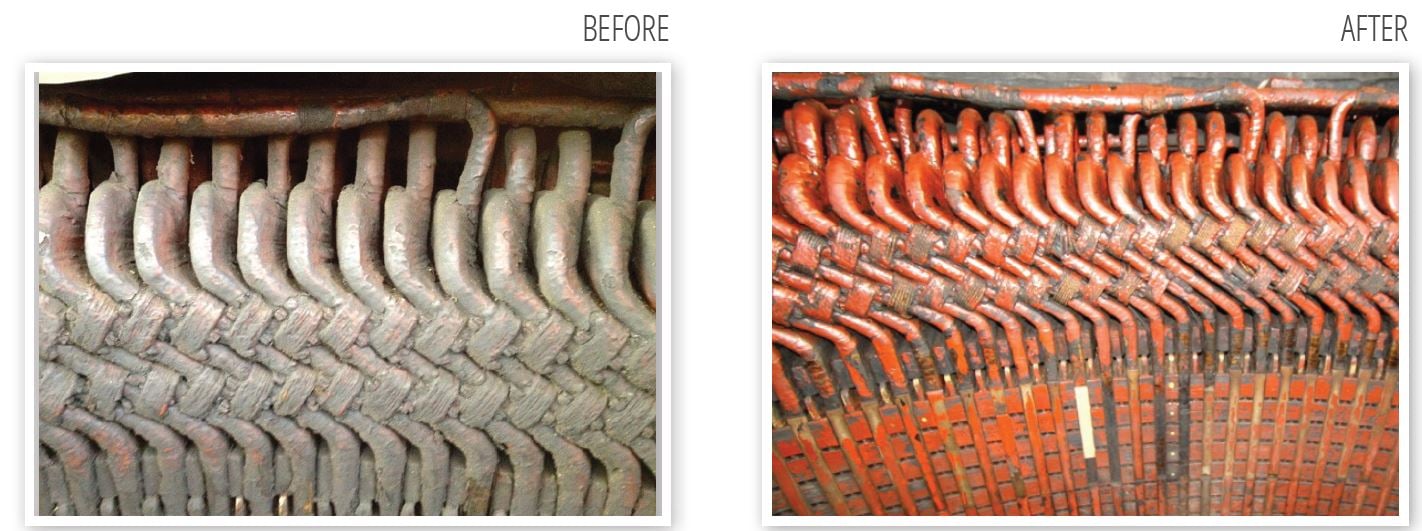
A Pacific Gas & Electric (PG&E) hydroelectric generator in California had been out of service for several years.
The unit was in very poor shape and the main concern was to provide a gentle cleaning action that would not damage the delicate windings. Generator cleaning projects such as this one require very delicate cleaning for some areas, but more aggressive cleaning in others.
Coldsweep, Inc., a company that provides industrial cleaning services to the industry, was contacted for the job.

In order to place the unit back in service, the fragile insulation on the stator needed to be delicately cleaned without causing additional damage to the windings.
In the past, corn cob blasting and brushing or wiping with solvents have been used for generator cleaning. Corn cob blasting has proved to be too messy and hand cleaning with solvents is too time consuming and labor-intensive.
Coldsweep thought that dry ice blasting would be the perfect solution for the job.
Dry ice blasting systems use non-abrasive media in the form of recycled CO2 pellets that will not damage surfaces or equipment. The combination of dry ice cleaning’s kinetic energy and thermal effect break the connection between the dirt and surface, lifting away contaminants.
Learn how dry ice blasting compares to alternative methods >>
Unlike corn cob blasting and cleaning with solvents, dry ice cleaning:
- Provides a clean-in-place solution
- Is non-abrasive and will not damage sensitive equipment
- Is non-conductive
- Provides a completely dry cleaning process
- Is environmentally responsible
- Does not add secondary waste
- Is able to get into tight nooks and crannies
The Results
The stator diameter was 10-foot with a 6-foot bore. This project used about 8,000 pounds of dry ice and took about six days to complete. This included time to erect containment, perform the dry ice cleaning, wipe down the generator and dismantle the containment.

“We shaved both block ice and 3mm rice pellets with ease and experienced no issues,” said Heath. “The SDI Select 60 performed wonderfully to clean the delicate windings…”
Several nozzle configurations were used for this project, and varied in width/blast swath from .8 inches up to 2 inches. Narrower nozzles were used to clean the fragile portions of the windings and wider nozzles were used to speed up the cleaning in areas that could tolerate more aggressive cleaning.
Where there was easy access, longer nozzles were utilized. For the end turns on the top and bottom of this vertical unit, 8-inch long nozzles were used because of the tight working quarters.
Learn about dry ice blasting in power generation >>
It was important that the cleaning action could be precisely controlled with various nozzle types and sizes.
“I did not have access to high-pressure air at this worksite, but the possibility of performing three different types of dry ice cleaning (dry ice dusting, traditional and high-pressure) with one machine is very compelling for us. It was especially convenient to be able to place the SDI Select 60 outside of our containment because it simplified loading the dry ice into the machine.”
Coldsweep carefully cleaned the unit, taking care not to over-clean areas that could not tolerate it.
The customer was very pleased with the results and brought other hydro users on site to see how they were successfully cleaning the unit. The generator is now fully back in service.
“With the ability to shave with any dry ice media, it eliminates worries about dry ice availability, opens up opportunities for new territories and applications and expands our capabilities. Many people within the company originally felt that this generator might be beyond salvage but, once again, Cold Jet seems to make the impossible a little easier to achieve.”
.png) English
English